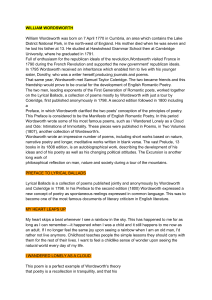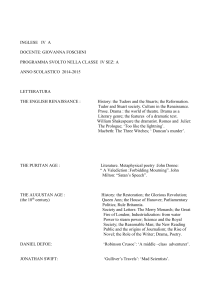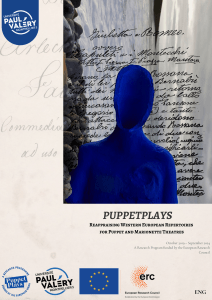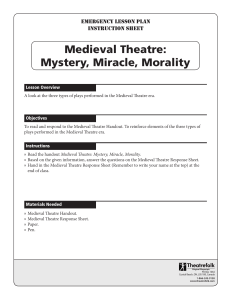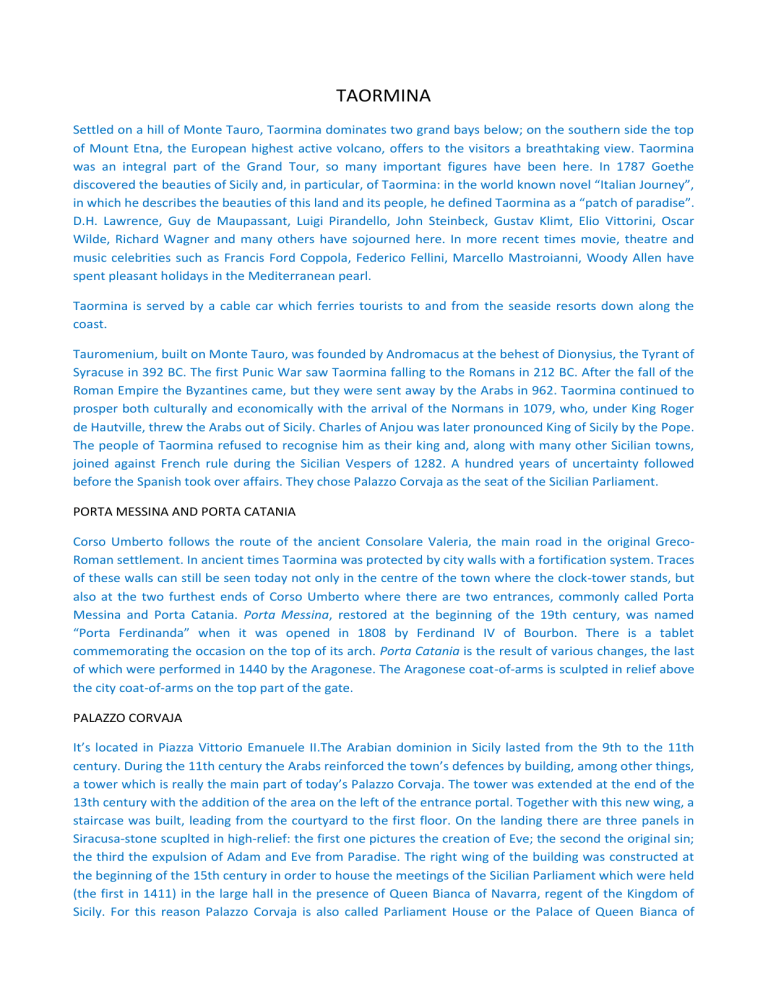
TAORMINA Settled on a hill of Monte Tauro, Taormina dominates two grand bays below; on the southern side the top of Mount Etna, the European highest active volcano, offers to the visitors a breathtaking view. Taormina was an integral part of the Grand Tour, so many important figures have been here. In 1787 Goethe discovered the beauties of Sicily and, in particular, of Taormina: in the world known novel “Italian Journey”, in which he describes the beauties of this land and its people, he defined Taormina as a “patch of paradise”. D.H. Lawrence, Guy de Maupassant, Luigi Pirandello, John Steinbeck, Gustav Klimt, Elio Vittorini, Oscar Wilde, Richard Wagner and many others have sojourned here. In more recent times movie, theatre and music celebrities such as Francis Ford Coppola, Federico Fellini, Marcello Mastroianni, Woody Allen have spent pleasant holidays in the Mediterranean pearl. Taormina is served by a cable car which ferries tourists to and from the seaside resorts down along the coast. Tauromenium, built on Monte Tauro, was founded by Andromacus at the behest of Dionysius, the Tyrant of Syracuse in 392 BC. The first Punic War saw Taormina falling to the Romans in 212 BC. After the fall of the Roman Empire the Byzantines came, but they were sent away by the Arabs in 962. Taormina continued to prosper both culturally and economically with the arrival of the Normans in 1079, who, under King Roger de Hautville, threw the Arabs out of Sicily. Charles of Anjou was later pronounced King of Sicily by the Pope. The people of Taormina refused to recognise him as their king and, along with many other Sicilian towns, joined against French rule during the Sicilian Vespers of 1282. A hundred years of uncertainty followed before the Spanish took over affairs. They chose Palazzo Corvaja as the seat of the Sicilian Parliament. PORTA MESSINA AND PORTA CATANIA Corso Umberto follows the route of the ancient Consolare Valeria, the main road in the original GrecoRoman settlement. In ancient times Taormina was protected by city walls with a fortification system. Traces of these walls can still be seen today not only in the centre of the town where the clock-tower stands, but also at the two furthest ends of Corso Umberto where there are two entrances, commonly called Porta Messina and Porta Catania. Porta Messina, restored at the beginning of the 19th century, was named “Porta Ferdinanda” when it was opened in 1808 by Ferdinand IV of Bourbon. There is a tablet commemorating the occasion on the top of its arch. Porta Catania is the result of various changes, the last of which were performed in 1440 by the Aragonese. The Aragonese coat-of-arms is sculpted in relief above the city coat-of-arms on the top part of the gate. PALAZZO CORVAJA It’s located in Piazza Vittorio Emanuele II.The Arabian dominion in Sicily lasted from the 9th to the 11th century. During the 11th century the Arabs reinforced the town’s defences by building, among other things, a tower which is really the main part of today’s Palazzo Corvaja. The tower was extended at the end of the 13th century with the addition of the area on the left of the entrance portal. Together with this new wing, a staircase was built, leading from the courtyard to the first floor. On the landing there are three panels in Siracusa-stone scuplted in high-relief: the first one pictures the creation of Eve; the second the original sin; the third the expulsion of Adam and Eve from Paradise. The right wing of the building was constructed at the beginning of the 15th century in order to house the meetings of the Sicilian Parliament which were held (the first in 1411) in the large hall in the presence of Queen Bianca of Navarra, regent of the Kingdom of Sicily. For this reason Palazzo Corvaja is also called Parliament House or the Palace of Queen Bianca of Navarra. In any case the mansion is named after the Corvaja family, one of the oldest and most noble families in Taormina. In 1945 the first mayor of Taormina had the building dispossessed. Today the building houses the Sicilian Museum of Folk Arts and Traditions and the Tourist Office. The architectural style of the building is a mixture due to the different eras during which it was built and extended: from Arabian to Norman to Gothic. ST. CATHERINE’S CHURCH The exact construction date of this church is not known. It’s consecrated to St. Catherine of Alexandria in Egypt and it’s opposite Palazzo Corvaja. It is thought to date back to 1663, the year engraved on the tablet of the ossuary found outside the church and now located in the wall beside the staircase which leads to the crypt. The entrance door to the sacresty is on the left of the portal. As it was built on the ruins of the Odeon, the remains of which can be seen behind the church, part of the orchestra and scene were destroyed. The scene of the Odeon is believed to have been created using the colonnade of a pre-existent Greek temple dedicated to Aphrodite. THE ODEON It was built by the Romans when Taormina became a military colony in the year 21 B.C. under Caesar Augustus Octavian, the first Roman emperor. Much smaller than the theatre, it’s evidence of how important culture was to Taormina in those days. It’s just behind a hill named after St. Catherine of Alexandria in Egypt. lt was found accidentally in 1892 and the story of its discovery is an unusual one: a blacksmith was digging in his land behind St. Catherine’s Church when his pick uncovered a red brick construction. A year later the excavations began and the Odeon appeared, badly damaged in various sections. Its architecture is almost identical to that of the larger theatre, they are both divided into scene, orchestra and cavea, but they are oriented differently: the Greek-Roman Theatre faces the south while the small Odeon faces north-east. It’s built in clay bricks. It’s thought to have been used for musical recitals. THE GREEK-ROMAN THEATRE Just before St. Catherine’s church, on the other side of the street, there’s a narrow path which leads to the Greek-Roman Theatre. It was built in the Hellenistic period (around the middle of the third century B.C.): each ancient Greek town had its own Theatre where they performed tragedies by Aeschylus, Sophocles and Euripides and comedies by Aristophanes, just to name the most famous authors. The Theatre in Taormina is the second-largest in Sicily after the one in Siracusa. It was enlarged and almost entirely rebuilt by the Romans. It is 50 metres wide, 120 long and 20 metres high. The structure takes advantage of the natural hill slopes. It’s divided into three main sections: the scene, the orchestra and the cavea. The scene is where the actors used to perform; there is now a large portion missing in the centre of the scene, supposedly caused by attacks during the wars. Nevertheless this serious damage makes it even more evocative due to the magnificent panorama (the bay of Naxos and Mount Etna) which can now be seen. According to reconstructions by experts, the scene was decorated with two series of columns of the Corinthian order, recognizable by the shape of the capitals and their acanthus leaf design. The orchestra was the flat area in the centre where the musicians stayed, and separates the scene from the cavea which instead is the series of steps where the spectators were seated. In Roman times, the theatre ceased to be used for stage performances and was used instead for gladiatorial games, so the orchestra was transformed into an arena with elevated sides, necessary to keep the spectators safe from harm during such games.The theatre is thought to have been able to seat more than 5000 spectators. THE GYMNASIUM or NAUMACHIE The Gymnasium in Taormina was in the area called “Giardinazzo”, where the so-called Naumachiae ruins can still today be seen. The “Gymnasium” was usually a construction with a rectangular perimeter, surrounded on its four sides by an arcade supported by columns. The area in the centre was for games and gymnastical exercises. The athletes who participated in the Olympic Games were trained in the Gymnasia. Here the only remaining wall rests on a double row of steps in Taormina-stone which form the base of the wall. There are 18 niches with round arches and 18 other smaller rectangular niches. The name “Naumachiae” (from Greek meaning “sea battle”) improperly given to these ruins can be ascribed to the fact that there is a large reservoir on the remaining wall, which used to be a water supply for the Gymnasium and a reserve for the whole town. SQUARE APRIL THE 9TH On a balcony overlooking the sea is located this square, at the central point of Corso Umberto. The square is so called because on April 9th 1860, during mass in the Cathedral, word spread that Garibaldi had landed at Marsala to liberate Sicily from the Bourbons. The news turned out to be false: it would be a month later, in fact, before Garibaldi landed at Marsala; nonetheless, the people wanted to remember that event and so dedicated the city’s most beautiful square to that date. Before then, the square was called Piazza Sant’Agostino after the Gothic Church of S. Agostino, which was built in 1448 and stands at the side of the square. Today it houses the public library. The 17th century Church of S. Giuseppe, built in the Baroque style, is located next to the Clock Tower and faces out onto the square. A double staircase, with a balustrade in Syracuse stone, leads up to the entrance. THE CLOCK TOWER The clock-tower, which rises over an arch called “Porta di Mezzo”, acts as an entrance gate to the old town, “the 15th century area”. Dating back to the 12th century, the tower was razed to the ground during a French invasion under Louis XIV in 1676. What can be admired today is a reconstruction by the people of Taormina in 1679, who added a large clock to the tower. Studies carried out over the years, however, have shown that its foundations in large square bricks of Taormina-stone date back further than the first construction date of the tower, so it was probably built on the ruins of ancient defensive walls, dating back to the origin of the city, around the 4th century BC. PIAZZA DUOMO In this square it’s set a Barocco style fountain, built in 1635 in Taormina-marble with three concentric steps at its base. On each of the four sides there are small columns supporting basins; mythological ponies overlook the basins and water flows out of their mouths. The basin on the eastern side is larger than the others since it was a drinking trough for animals. There is a smaller octagonal basin in the middle of the fountain base with four putti (little angels) resting on it. Three mythological characters resembling Tritons stand in the middle of this basin with their arms crossed over their heads so as to support another basin; inside of it there’s a basket of fruit on the top of which stands Taormina’s coat-of-arms, which normally pictures a male centaur (half man, half horse) but in this case it was turned into a female centaur. A staircase on the opposite side of the street descends into Piazzale San Domenico, where the former Dominican monastery is located. THE DUOMO The Duomo-Cathedral, dedicated to Saint Nicholas of Bari, was built in the 13th century on the ruins of a small medieval church, buti t was later rebuilt in the 15th and 16th centuries. As with many churches of this period in Sicily, it has a fortress-like quality thanks to its robust structure and the battlements. Its Renaissance doorway hides an essentially Gothic interior. It has a Latin-cross plan with three aisles; there are six minor altars in the two side aisles. The nave is held up by six monolithic columns, three on each side, in pink Taormina-marble. The ceiling of the nave has wooden beams. The main portal was rebuilt in 1636; above it there’s a small rose window with a central cross. The Byzantine Madonna, kept in the Cathedral, was found inside an old well (=pozzo) and was probably placed there to save it from the many invasions and raids that went on during the Arabian era, although according to the tradition it was left there by the angels. That’s why it’s called the “non hand-made” Madonna, meaning not made by human hands. It is an oil painting on panel covered with a layer of silver and semi-precious stones. Belonging to the Byzantine era, the painting was dedicated to Holy Mary of the Greeks. THE SAN DOMENICO This Dominican monastery, now the San Domenico Hotel, was the third monastery in Taormina. Its origins and history are related to Damiano Rosso, a Dominican friar who was a descendant of the Altavilla family and Prince of Cerami; after becoming a friar he donated all he owned to the Dominican order in 1430, so his mansion was turned into a monastery. It was the first or perhaps the only castle existing in Taormina during the middle ages. Some centuries later the estate was given back to one of his heirs who turned it into a hotel. The only part of the former monastery to remain open to worship was the chapel which, however, was destroyed by bombings in 1943. The congress hall of the hotel was built on the ruins of the chapel. The bombings did not damage the rest of the hotel nor the 50 cells which were later turned into luxurious hotel-rooms. The beautiful cloister and magnificent park, which overlook the sea and have a view of Mount Etna, are the most charming parts of the hotel. Below and behind San Domenico Hotel runs Via Roma, a street which offers wonderful panoramic views; at its end you will find the public gardens or Villa Comunale. THE PUBLIC GARDENS They’re named after the Duke of Cesarò who was a representative of Taormina’s constituency when they were made, were donated by the Cacciola-Trevelyan family during the 1920s. Inside, there is a thick vegetation and a typically Mediterranean array of hedges and flowerbeds with cobbled paths. An avenue lined with olive-trees runs among trees of various species, some of which are rare and extraordinarily beautiful. There are also some characteristic pagoda-style towers with arabesque designs. Florence Trevelyan, an English nobelwoman, had these towers built so as to study the birds since she was a keen ornithologist. There are some relics from the two World Wars and a war monument to the fallen. BADIA VECCHIA Badia Vecchia was purchased by the Municipality of Taormina in 1960. It does seem that the mansion is called Badia Vecchia because it once was an abbey. This theory is based on the discovery of a sacred painting at the bottom of a rain-water well; it seems that the painting was hidden there so as to save it from invasions. All the niches inside were then thought to be niches for icons and not just simple storage spaces. The Gothic architecture is very similar to that of Palazzo Duca di S. Stefano, so the two buildings are of the same period, the late 1300s. The Gothic style of this building too is therefore influenced by Arabian and Norman art. A frieze of inlaid lavic stone and white Siracusa-stone decorates the building, marking the dividing line between the first and second floors. The swallow-tailed battlements make it resemble a fortress-like tower. Both Badia Vecchia and Palazzo Duca di S. Stefano were actually built as a strongholds along the boundary walls. PALAZZO DUCA DI S. STEFANO The palace’s square structure, position and battlements make it look like a fortress. This 13th century palace, situated near Porta Catania, has a beautiful garden and was the home of the De Spuches, a noble family of Spanish origin who were Dukes of S. Stefano di Briga and Princes of Galati, two towns in the Messina area. It’s one of the masterpieces of Sicilian Gothic art, in which the elements of Arabian and Norman art merge. Arabian reminiscences are aroused by the decoration on the top part of the palace: a wide frieze runs along the east and north facades formed by a wavy decoration in lavic stone alternated with rhombus-shaped inlays in white Siracusa-stone. Norman art instead is recalled by its square tower-like plan and by what remains of the swallow-tailed battlements. The entrance to the ground floor is an ogival arch constructed with squared bricks of lavic stone and Taormina stone. The first floor was reached by means of drawbridges and moving staircases through the small door which can still today be seen between the two windows on the first floor. An internal wooden staircase was reproduced when the building was restored in the 18th century. On the second floor there are four beautiful windows in Gothic style. A column of pink granite stands in the middle of the ground floor and is thought to have once been in the Greek Theatre. The municipality of Taormina only gained possession of this palace in 1964. Today it houses the Mazzullo Foundation, run by a clever sculptor. It’s a location for civil weddings and temporary exibitions. SHRINE TO OUR LADY OF THE FORTRESS Situated on the top of Mount Tauro, the shrine Madonna della Rocca has perhaps one of the most beautiful panoramas in Taormina. It was built in 1640, taking advantage of the rock structure which forms a cave there.
![DAr2Ca [modalità compatibilità]](http://s1.studylibit.com/store/data/007526151_1-adc1d8764078d849ee8ba51d9b24710f-300x300.png)
